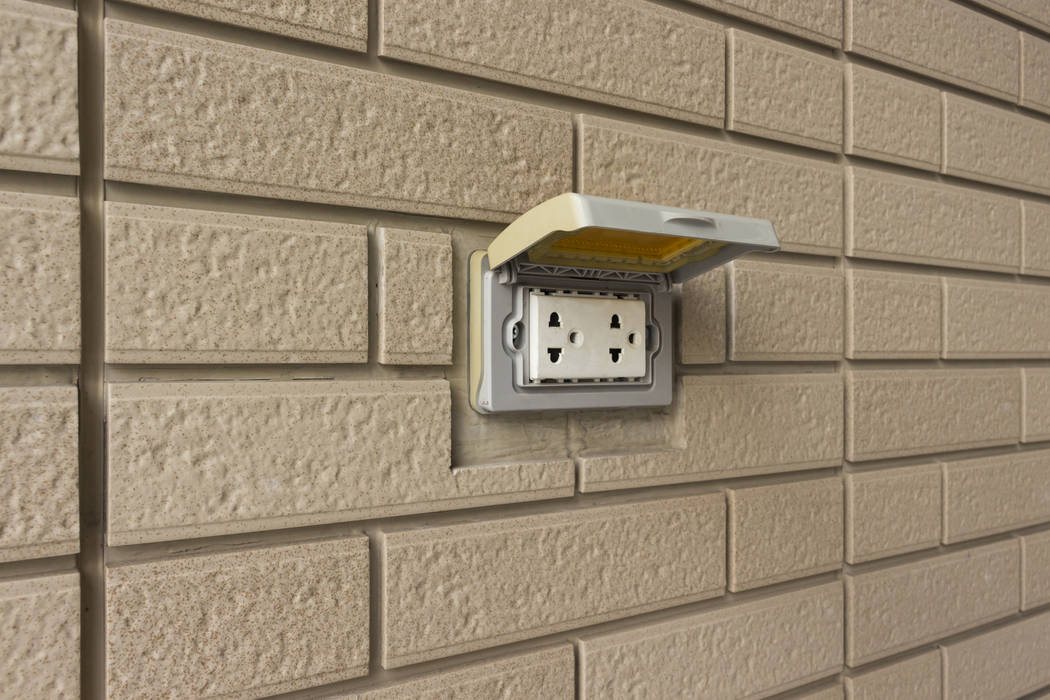Weatherproof cover will ensure rain doesn’t enter outlet
Q: I have a light set in my backyard that is plugged into an electrical outlet that has two silver flaps to cover the plugs. The system works fine except that I get very nervous when it rains. My fear is that the water will run into the electrical outlet and zap the system. Are my fears unfounded?
A: There is no need to be afraid of the rain. The outlet you are using should be GFCI-protected. The GFCI — ground fault circuit interrupter — outlet might be at that location or upstream of that location, or you might have a GFCI breaker in your main electrical panel.
You can buy a tester for about $5 to check that it is protected. Just plug the tester into the outlet and press the button on the tester. If the power to the outlet, stops then it is GFCI-protected. If you test the outlet and you still have power, install a GFCI outlet in that location.
It sounds like you are worried that, while in use, the rain could enter the outlet. That is possible because your box cover has the doors that must stay open to access electricity. There is an easy fix: You can buy a weatherproof box cover that is made for use during rain or when your sprinklers hit it.
This type of cover is a semi-dome shape with one or two holes at the bottom. The dome shape has enough space for the plug, and the holes at the bottom fit snugly around the cord as it leaves the box. Replacing the old cover with the new one is easy.
When you go to buy the new cover, take note as to whether you will need a vertical or horizontal cover. That makes a difference because you want the cord holes to be on the bottom.
A new cover will cost under $15.
When you get the cover home, turn off the power to the outlet at the main panel. Don’t just trip the GFCI “test” button. That will kill power to the outlets that are downstream of the GFCI, but live power will still flow into the outlet. If your outlet is downstream of a GFCI, you can trip it and hope nobody inside the house decides to reset it.
Getting shocked is no fun. I once got shocked by 220-volt current, and I made noises I didn’t think I could make. The whole episode took a second or two, but it seemed like slow motion from where I was standing. Anyway, just be sure that the power is off before you start toying with electricity.
Remove the old cover and the foam gasket by unscrewing the single screw in the center. Most new covers will house the outlet inside, so you will have to unscrew the outlet from the box, slip the new cover and foam gasket over and behind the outlet and screw the whole works back together.
You won’t have to remove the wires from the outlet as you do this. Just free the outlet from the box. As you place the box back against the wall, align everything one final time before tightening. On some brands, you will also have to install a standard wall cover inside the new weatherproof cover.
Turn on the power and plug in your lights. You don’t need to be afraid of the rain again.
Mike Klimek is a licensed contractor and owner of Las Vegas Handyman. Questions may be sent by email to handymanoflasvegas@msn.com. Or, mail to 4710 W. Dewey Drive, No. 100, Las Vegas, NV 89118. His web address is www.handymanoflasvegas.com.
Do-it-yourself
Project: Install a weatherproof outlet cover
Cost: Around $15
Time: Under 1 hour
Difficulty: ★























